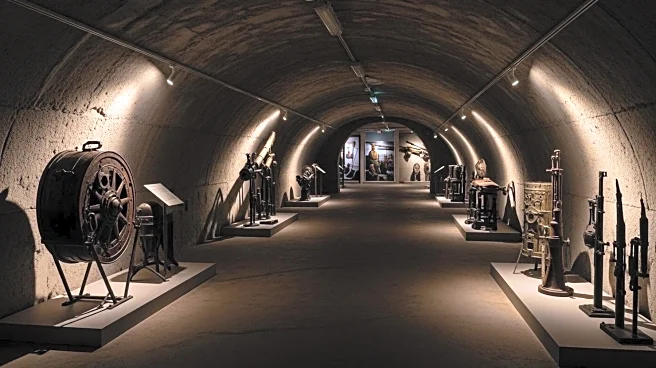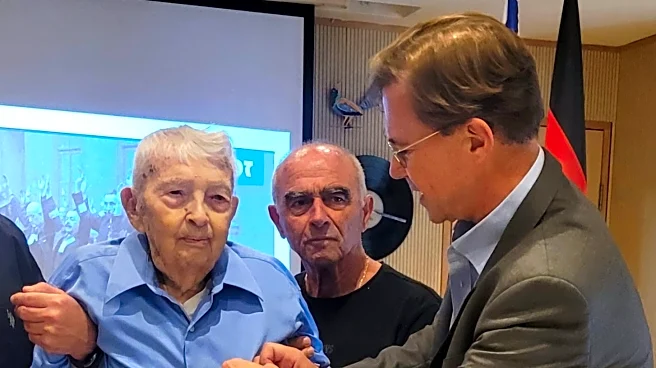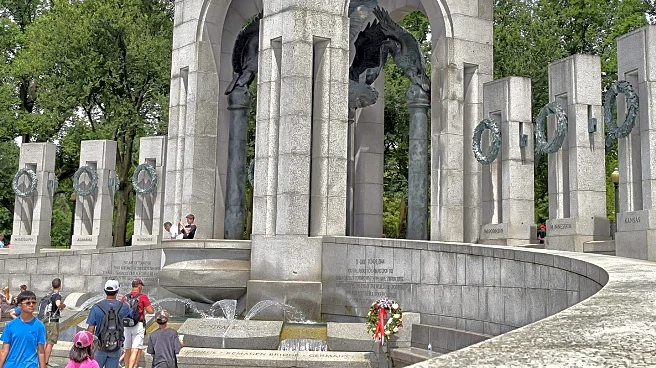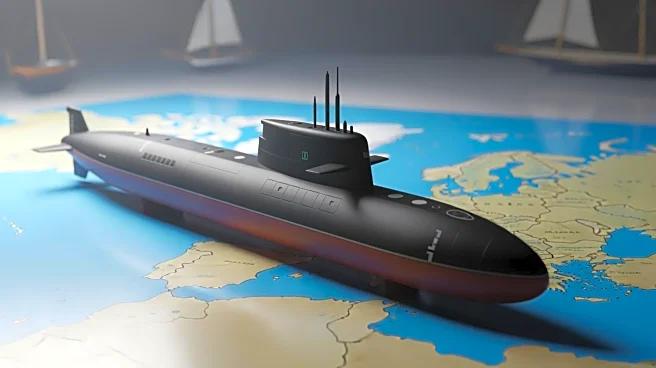What's Happening?
A complex of nearly 20 miles of underground tunnels, originally constructed by Nazi Germany, has been transformed into an army museum in Poland. Known as Festungsfront Oder-Warthe-Bogen or the Ostwall,
this subterranean city was abandoned in 1945 and is now open to the public as part of the Międzyrzecz Fortified Region Museum. The museum offers a glimpse into the life of soldiers during the Third Reich, with mannequins in uniform displayed in various reconstructed rooms such as administrative areas, sleeping quarters, and bathrooms. The construction of the Ostwall began before World War II, intended to fortify Germany's eastern frontier against Poland and the Soviet Union. Although the project was never completed, it remains one of the most advanced fortifications of its time.
Why It's Important?
The transformation of these tunnels into a museum serves as a significant historical and educational resource, providing insight into the military strategies and living conditions during Nazi Germany. It highlights the architectural and engineering prowess of the era, while also serving as a reminder of the tumultuous history of the region. The museum attracts tourists interested in dark tourism, contributing to the local economy and preserving the historical narrative of World War II. Additionally, the site has cultural significance, having been used for raves and weddings by the Bunker People in the 1980s and 1990s, adding layers to its historical context.
What's Next?
The museum continues to develop its exhibits, potentially expanding its offerings to include more interactive and educational experiences for visitors. As interest in dark tourism grows, the museum may see increased visitor numbers, prompting further investment in infrastructure and preservation efforts. Local authorities and historians may collaborate to enhance the site's accessibility and educational value, ensuring that the historical significance of the tunnels is maintained for future generations.
Beyond the Headlines
The museum's existence raises ethical questions about the commercialization of sites associated with dark history. It challenges visitors to reflect on the impact of war and the importance of preserving history to prevent the repetition of past mistakes. The graffiti left by the Bunker People adds a unique cultural dimension, illustrating how spaces can evolve and be repurposed over time, reflecting changing societal values and subcultures.













